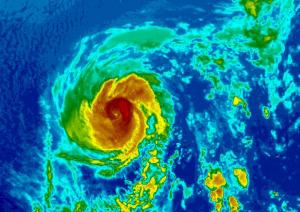TOKYO, Aug. 26 (UPI) — In a new study, scientists report a series of tremors picked up by seismometers in Japan were produced by a “weather bomb” on the other side of the globe, just off the coast of Greenland.
The researchers didn’t detect an earthquake, only an amplification of the background noise that constantly hums across the planet’s interior — vibrations caused by tidal forces, ocean waves, deep-lying earthquakes and other disturbances.
As a storm system stalled over the North Atlantic, atmospheric pressure rapidly dropped. The so-called weather bomb caused pressure waves to reverberate back and forth between the ocean surface and ocean floor. The vibrations were absorbed by the seabed and bedrock and were felt on the other side of the planet in Japan.
Scientists have previously recorded seismic waves produced by large ocean storms, but seismometers have mostly detected P-waves, fast-moving compression waves. Japan’s seismometers picked up P-waves and S-waves, also called transverse or elastic waves — a rarity.
S-waves shear, featuring side-to-side vibrations perpendicular to the direction in which they travel. They’re called secondary waves because they move through rock more slowly and arrive after P-waves.
The latest findings, detailed in the journal Science, offer hope that closer monitoring of seismic waves created by future storms might offer insights into the nature of Earth’s interior structures.
“Having both P-waves and S-waves gives more information,” Peter Gerstoft, a seismologist at the University of California, San Diego, told New Scientist. “Because S-waves have shorter wavelengths than P-waves, smaller-scale vertical and lateral variations in Earth’s structure can potentially be imaged.”

COMMENTS
Please let us know if you're having issues with commenting.